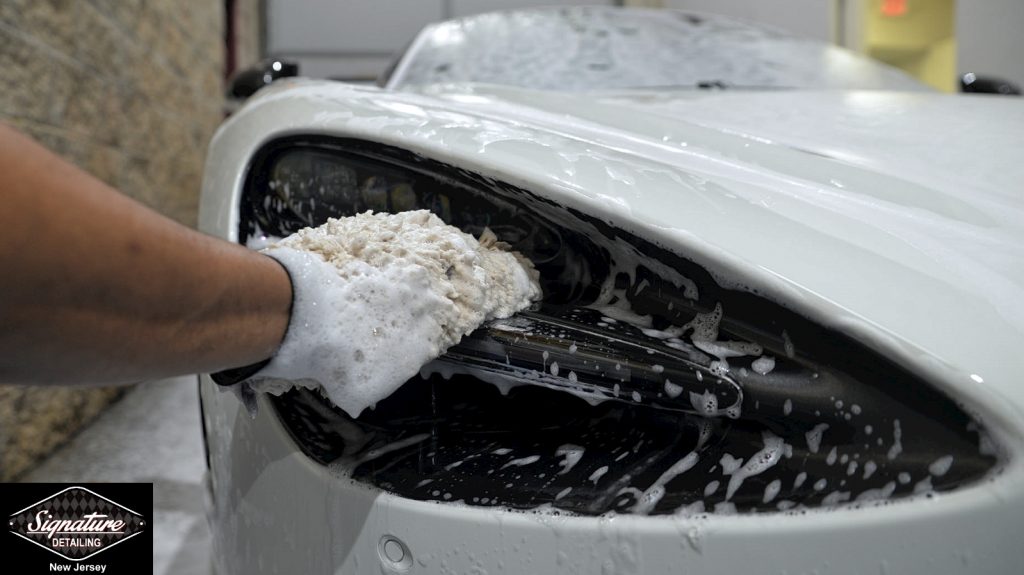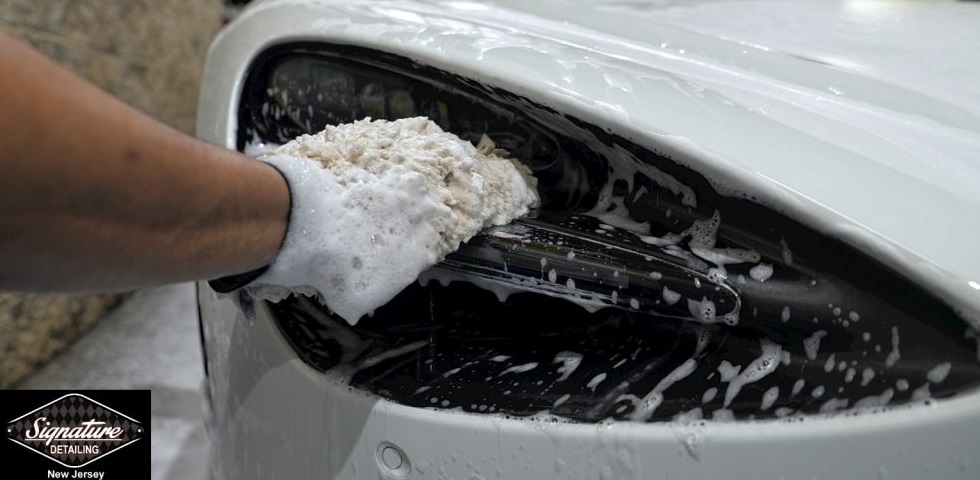
Touchless car washing is a frequent topic within the auto detailing industry. Some claim it is the best method of long-term maintenance for finishes over time, while others claim it is the safest.
At Signature Detailing in North New Jersey, clients frequently ask for advice for car washing techniques. Due to the extremes of seasonal climate changes, pollen levels, insects, tree sap, and snow and road salts de-icing chemicals used on roads we do not recommend Touchless car washing as an effective way to fully clean automotive surfaces.
While Touchless car washing might help reduce friction on the paint over time, it is lacking in its ability to clean surfaces. By examining the benefits and shortcomings of the Touchless Car Washing Method, it can quickly be seen that this method is not the end all be all of vehicle surface maintenance.
Benefits of Touchless Car Washing
- Over time less friction occurs over the surface, avoiding the minor topical scratches and marring from friction
- Time Savings. Since less steps are involved the service is quick
Shortcomings of Touchless Car Washing
- Inability to Tackle Heavy Soiling, Road Film, De-Icing Chemicals, Bug Remains
- Inability to Remove Topical Contamination Partially Bonded to Surface
- Strong Chemicals may have negative effects on rubber trim, plastic components, or possibly the paint itself
So it is true that Touchless car washing can be quicker and may help prevent fewer marks on surfaces from friction over time on vehicle surfaces. However, overall a Touchless wash is much less effective at fully cleaning surfaces. Additionally, automated Touchless washes generally have difficulty tackling a large amount of heavy soiling that frequently occurs in fall and winter seasons.
Conclusion
Manually washing a vehicle on a regular schedule with a traditional wash, using a dedicated car shampoo and a dedicated automotive Wash Mitt is the most effective method of cleaning surfaces. Additionally, depending on the soiling level of the surface, or a Rinseless or Waterless Wash method using Optimum No Rinse (ONR) with dedicated high-quality microfiber towels is another great method to fully clean automotive surfaces.
Both these manual wash techniques, used at regular intervals, prevent topical contamination from sitting and ultimately bonding to exterior surfaces. Think of removing vehicle surface contamination like caring for a white collared shirt. If it is worn once and skin transfer to the collar is simply removed. However, if the shirt is worn 3-4 time for a full day, the ring around the collar is harder to fully remove. It is the same with vehicle washing, a regular schedule of manual washing will ensure the surface remains clean long-term.
Of course, the type of wash method determined for vehicle surfaces is based on a number of factors, but either a traditional wash with a mitt and car shampoo or a Rinseless/Waterless with towels and product, both function to actually remove regular road film or other contamination from the surface. A Touchless wash cannot do this and its aggressive chemicals might possibly lead to rubber, plastic, or even painted surfaces to have negative reactions.
So while the Touchless wash method may be a safer alternative than an automated car wash with brushes, it is not the end all. Realize that to fully remove all types of grime and contamination some form of surface agitation is required—much like clothes and a washing machine.
